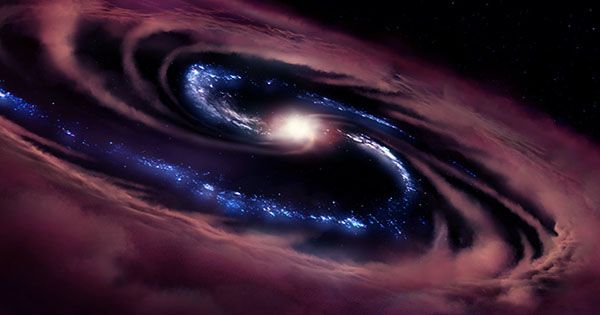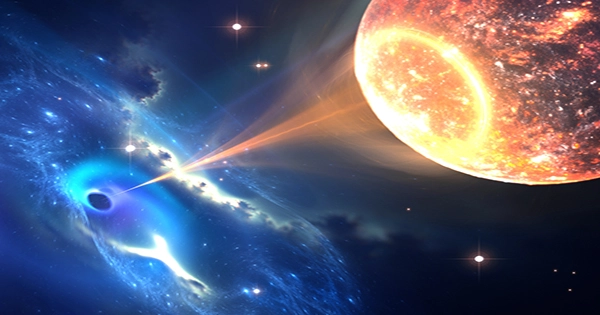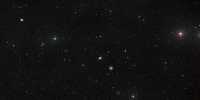The presence of two supermassive black holes on the verge of merging explains the frequent brightening and dimming of a quasar 9 billion light-years away. If this is the case, their orbits are decyaing at a rate that would result in their colliding in roughly 10,000 years, causing a massive gravitational wave. At their core, most galaxies have supermassive black holes with masses hundreds of millions, if not billions, of times that of the Sun. When galaxies collide, their massive masses descend towards one another, swinging into an orbit that tightens as energy is lost until the two objects collide.
That is, at least, the theory. It’s a different story when you see it in action. The closest such pair has yet been identified, according to research published in The Astrophysical Journal Letters, and it is just the second time such enormous masses have been located closer than the distance between the Sun and the nearest star. PKS 2131-021 is a quasar that has piqued the interest of astronomers for nearly 50 years. It spits out a jet of material at more than 99 percent the speed of light, like other quasars, but unlike most others, the jet is headed straight for Earth, making it a blazar.

In data taken with Caltech’s Owens Valley Radio Observatory radio telescope, the brightness of PKS 2131-021’s jet has a near-perfect sinusoidal curve. “That implies that there is a pattern that we may follow throughout time.” Caltech Professor Tony Readhead said in a statement. Readhead and his colleagues examined previous data obtained from other telescopes. Between 1981 and 2005, there was a consistent pattern, but not between 1981 and 2005. Then Sandra O’Neill, a chemistry major working on a pandemic project with blazers, discovered even older archive records of PKS 2131-021, made with the Haystack Observatory.
“We knew something very remarkable was going on when the peaks and troughs of the light curve detected from recent times matched the peaks and troughs reported between 1975 and 1983,” O’Neill stated. The curve might be described by an enormous black hole orbiting an even more massive one every two years, according to modeling, albeit relativistic effects lengthen the timescales so that the cycle takes 4.7 years from our perspective. Although the authors acknowledge that less clear explanations exist, they deem them less likely and have not studied them in-depth using Occam’s razor.
Because of their massive masses, they orbit each other quicker than a planet orbiting the Sun at a comparable distance. They are separated by no more than 2,000 astronomical units — 2,000 times the Earth-Sun distance or fifty times Pluto’s orbit – probably a tenth of that, according to O’Neill and co-authors. Even the components of OJ 287, the only prior supermassive black hole pair considered to be reasonably close, are 10-100 times further apart. As a result, PKS 2131-021 enables us to observe a far more fascinating stage of the process, in which slow orbital decline leads to a merger. The light curve for PKS 2131-021 is substantially more regular than OJ 287, maybe because of the close proximity.
Other “close” samples had thousands of times wider separations. Scientists have proven that gravitational waves created by merging black holes are relatively prevalent since the first detection. These are stellar black holes, however, remains of supernovas with masses of 20 times or more than the Sun. As the Sun is to a massive asteroid, the black holes in the centers of galaxies are stellar black holes. They’re also far rarer, which must apply to their mergers as well. When PKS 2131-021 merges in 10,000 years or so, the gravitational wave created will be enormous, according to the authors. Even at their current separation, the pair’s interaction must be bending spacetime to the point where the gravitational wave they’re emitting might affect pulsar timing in a noticeable way.
















